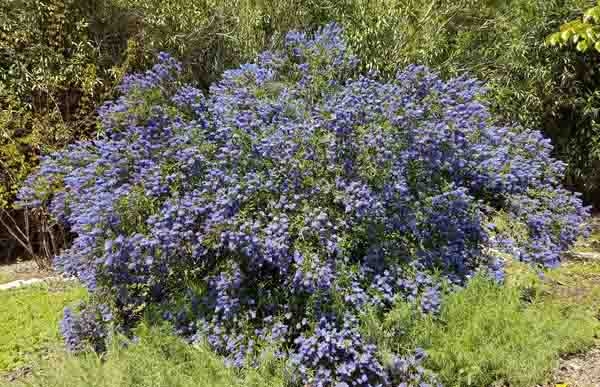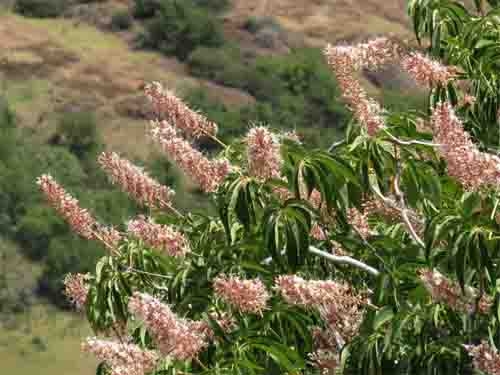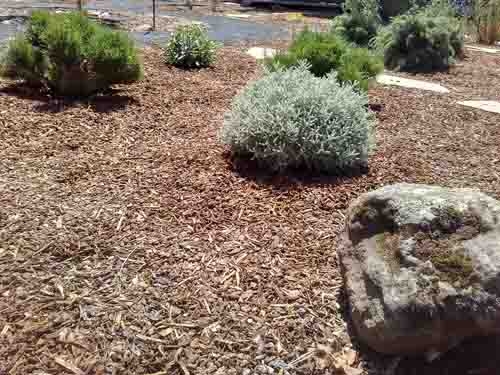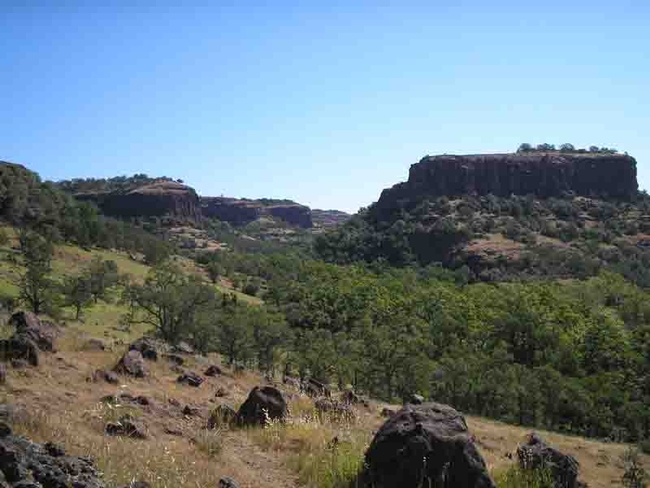Fall is the best time to put new plants in the ground. They can establish roots and become accustomed to conditions in their new home before going dormant for the winter, then benefit from the mild spring conditions before the scorching heat of summer arrives. Because we continue to experience serious drought, choose plants that are known to be drought resistant and/or drought tolerant.

The beauty of evolution is its reliance on trial and error, or adaptation. What works, works very well, and allows life in many forms to exist in some of Earth's harshest environments. The climatic conditions of the planet's seven Mediterranean Zones include between five and seven months of zero precipitation, and many days in a row with high temperatures of over 100 degrees Fahrenheit. These are challenging circumstances for any living thing. Yet a wide variety of plants have evolved clever strategies to survive these long, dry, hot periods.

Desiccation Tolerance: To desiccate something is to thoroughly dry it. Tolerance of desiccation gives a plant the remarkable ability to survive almost total dehydration. This strategy is employed by mosses and ferns. Briefly, plants in this category have developed the ability to enter into, and recover from, anhydrobiosis, the cessation of metabolic activity as a result of low intracellular water content. Next time you are hiking in Upper Park or the foothills during the dry months, you can see this phenomenon for yourself. Find a patch of rust colored, crunchy dry moss on a rock, and gently pour a small amount of water on it. In seconds, what appeared to be completely dead vegetation will turn green and supple.
Drought Avoidance: Many succulents employ strategies of drought avoidance. The most common of these strategies is Crassulacean acid metabolism or CAM (so named because this type of metabolism was first studied in plants of the family Crassulaceae). To avoid complete dehydration due to heat and drought, the stomata in the leaves remain shut during the day to reduce evapotranspiration, but open at night to collect carbon dioxide (CO2), from which they are able to complete the process of photosynthesis during daylight hours.

Annuals are the prime example of drought avoidance. When they find climatic conditions too unpleasant, they curl up and die, and let their seeds ride it out until circumstances improve with nourishing rains and milder temperatures. (Fun fact: California has considerably more endemic annuals than any other place on Earth.)
Drought Tolerance: Lastly, there is this catch-all phrase. Plants in this category are just better at functioning during annual drought conditions, due to a number of creative adaptations. Such plants are also called xerophytes; literally “dry plants.” They remain green all year round, but manage to save or store water, often through structural (usually leaf) morphology. Common structural adaptations for water conservation are:
- Thick, leathery leaves with waxy cuticles, which perform dual functions of cutting down on water loss and reflecting heat away from the plant. Our native Ceanothus (California Lilac) is a prime example of this.
- Small, thin leaves, which effectively reduce the surface area from which water loss can occur. The tiny yet highly fragrant leaves of Santolina typify this adaptation.
- Sunken stomata pits, which trap moist air and reduce water loss rates. Pine needles employ this strategy (as well as being small and thin).
- Hairy leaves, like those found on Cyprus ironwort (Sideritis cypria) or Lamb's Ears (Stachys byzantina), which shade the stomata and reduce contact from hot air, protecting plants from extremes of light and temperature.

UC Master Gardeners of Butte County are part of the University of California Cooperative Extension (UCCE) system. To learn more about us and our upcoming events, and for help with gardening in our area, visit our website. If you have a gardening question or problem, email the Hotline at mgbutte@ucanr.edu or leave a phone message on our Hotline at (530) 538-7201. To speak to a Master Gardener about a gardening issue, or to drop by the MG office during Hotline hours, see the most current information on our Ask Us Hotline webpage.